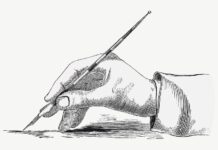When using an app or a certain product, have you ever wondered who made it and why? What was the motivation or ingenious idea that led to them creating it? While many products have done very well in our market, there are numerous that haven’t had enough lift to take off. Maybe they should’ve researched and corroborated with their users or customers before putting our products on the shelf. It is what product discovery is all about.
Product discovery is understanding the users’ problems and finding out the best solution after that. This refining process helps mitigate potential risks so that you can build just the right product for your users. It also helps the product discovery teams know what to prioritize to avoid wasting their resources and delivering something worthwhile to their customers.
I’m sure you’ve guessed the two core pillars of product discovery by now. In simple terms, it is identifying the problem and creating a solution. While this article will detail what holds up these two pillars, consider looking into some online management courses from Great Learning to get a more in-depth understanding of product discovery techniques to help your brand. While the pillars and stages might be named differently elsewhere, the basic framework remains the same. Being patient and taking the time to fine-tune your company’s product discovery process will save you from many potential mistakes.
PILLAR 1: Identifying a problem
- Understand your customers and their underlying needs.
Immerse yourself into their lives so that you can begin to see patterns and identify root problems. It would be best if you took away your preconceived ideas and, with an unbiased mindset, tried to understand the perspective of your users. Look into identifying your assumptions concerning the product.
Once you have laid this foundation, you can gather qualitative and quantitative research related to your users. You can use techniques like focus groups, one-on-one interviews, data analytics, empathy mapping, personas, and any feedback received on a similar product in the past. Let the users guide this process rather than guide them to a solution you already have in mind. Now would be an excellent time to conduct your research on the market—its gaps, competition, possible entry points, etc.
- Define the problem.
While the first step is to do with the big picture, this step is when we get into the details. Take your time to wade through all the user research. There might be patterns or certain problems that you notice keep repeating themselves as you do that. While there are many problems, you must choose one to build your product around. Consider the seriousness of the problem and how much value your product can add to the user. Once you’ve narrowed in on a problem, you can begin to define it. One way of doing this is writing out the whole problem in a single sentence. It can help your team be on the same wavelength and hunker down on the problem. Defining the problem is a crucial step as this is what guides and gives direction as you set out to work on a solution.
PILLAR 2: Creating a solution
- Brainstorm and prioritize
Now that we’ve identified our problem, it’s time to start solving it. You can begin by brainstorming ideas. Ideating can be a refreshing and fun process for a team. You can use many techniques, such as storyboarding or mind mapping. Once you’ve got a chance to lay all your ideas out, it’s time to see which ones are realistic. Gauge which ones are viable, feasible, and could have the most impact, then prioritize which ones you would like to move ahead with. What will help you prioritize is asking if this solution aligns with your company goals and stakeholder interests and whether it remains relevant to our potential users. There are many more prioritization techniques to assess the feasibility and value of every potential solution, and once you’ve narrowed down your ideas, it is time for the next step.
- Create prototypes and tests
Prototyping is the process of bringing ideas to life. The aim is to validate the product before showing it to your stakeholders and then your development team. There are many ways to do this, such as creating a minimal viable product (MVP) which is a product with just enough features to get feedback from users. You can also consider using mockups or sketches. Make sure you choose the prototype based on what you need to be tested, and as you’re in the discovery stage, make sure it’s inexpensive as well. If the idea fails, you can always move on without feeling bad about the money invested. It is important to remain flexible during this process of product discovery. Make sure that these prototypes are shown to users as they are the only ones who will give you the honest feedback that you need.
Testing helps you see if your solutions can solve the problem. Having multiple usability tests is the best way forward, as you are most likely to get valuable feedback from users on time. These can be done even remotely. Some other techniques used for testing include surveys, customer interviews, and A/B testing. Prototyping and testing will finally bring you to a viable solution.
You are now ready to present your product idea to your stakeholders!
Many different techniques and tools can make every stage of product discovery a success. If you are keen on developing yourself in this field, consider a product management certification from Great Learning from a reputable organization.
I want to leave you with a quote from the famous Marty Cagan as it is a good summary of what product discovery is all about.
“The purpose of product discovery is to quickly separate the good ideas from the bad…Specifically, this means getting answers to four critical questions: Will the user buy this (or choose to use it)? Can the user figure out how to use this? Can our engineers build this? Can our stakeholders support this?”







